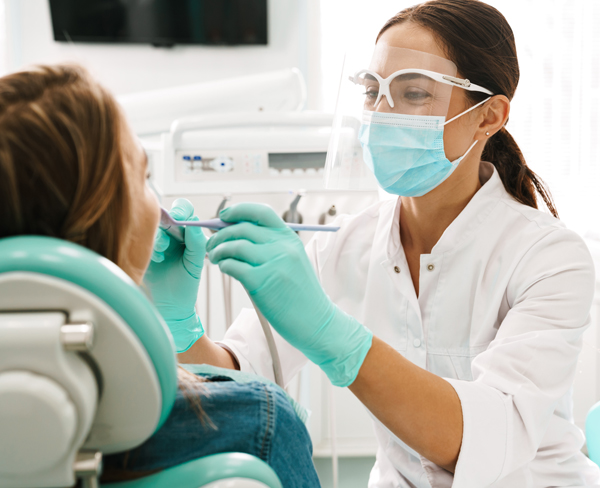Extractions
A dental extraction, commonly known as tooth pulling, is the process of removing a tooth from its socket in the bone. This procedure is typically performed by a dentist or oral surgeon and can be necessary for various reasons.
Reasons for Extraction:
- Severe Decay or Infection: When a tooth is extensively damaged by decay or infection, and other treatments like fillings or root canals are not viable, extraction may be the best option to prevent the spread of infection.
- Gum Disease: Advanced periodontal disease can weaken the tissues and bone supporting the tooth, necessitating its removal.
- Overcrowding:Sometimes teeth need to be removed to make space for proper alignment, especially before orthodontic treatments like braces.
- Impacted Teeth: Wisdom teeth, or third molars, often become impacted (stuck in the jaw) and can cause pain, infection, or damage to adjacent teeth, requiring extraction.
- Trauma: Teeth that are severely broken or damaged due to injury may need to be extracted if they cannot be repaired.
Procedure:
The extraction process begins with a thorough examination and X-rays to assess the tooth’s condition and plan the extraction. Local anesthesia is administered to numb the area around the tooth, ensuring the patient feels no pain during the procedure. In some cases, sedation or general anesthesia may be used, especially for complex extractions or anxious patients.
There are two main types of extractions:
- Simple Extraction: Performed on visible teeth, this involves loosening the tooth with an instrument called an elevator and then removing it with forceps.
- Surgical Extraction: Required for teeth that are not easily accessible, such as impacted teeth. This involves making an incision in the gum and sometimes removing bone around the tooth before extraction.

Reasons for Extraction:
- Severe Decay or Infection: When a tooth is extensively damaged by decay or infection, and other treatments like fillings or root canals are not viable, extraction may be the best option to prevent the spread of infection.
- Gum Disease: Advanced periodontal disease can weaken the tissues and bone supporting the tooth, necessitating its removal.
- Overcrowding:Sometimes teeth need to be removed to make space for proper alignment, especially before orthodontic treatments like braces.
- Impacted Teeth: Wisdom teeth, or third molars, often become impacted (stuck in the jaw) and can cause pain, infection, or damage to adjacent teeth, requiring extraction.
- Trauma: Teeth that are severely broken or damaged due to injury may need to be extracted if they cannot be repaired.
Procedure:
The extraction process begins with a thorough examination and X-rays to assess the tooth’s condition and plan the extraction. Local anesthesia is administered to numb the area around the tooth, ensuring the patient feels no pain during the procedure. In some cases, sedation or general anesthesia may be used, especially for complex extractions or anxious patients.
There are two main types of extractions:
- Simple Extraction: Performed on visible teeth, this involves loosening the tooth with an instrument called an elevator and then removing it with forceps.
- Surgical Extraction: Required for teeth that are not easily accessible, such as impacted teeth. This involves making an incision in the gum and sometimes removing bone around the tooth before extraction.
Aftercare:
Post-extraction care is crucial for proper healing. Patients are advised to rest, avoid strenuous activities, and follow specific instructions regarding diet and oral hygiene. Pain management may include over-the-counter pain relievers or prescribed medications. It’s important to avoid smoking and using straws, as these can dislodge the blood clot and delay healing.
Dental extractions, while sometimes necessary, are performed with the goal of maintaining overall oral health and preventing further complications for a patient.

Aftercare:
Post-extraction care is crucial for proper healing. Patients are advised to rest, avoid strenuous activities, and follow specific instructions regarding diet and oral hygiene. Pain management may include over-the-counter pain relievers or prescribed medications. It’s important to avoid smoking and using straws, as these can dislodge the blood clot and delay healing.
Dental extractions, while sometimes necessary, are performed with the goal of maintaining overall oral health and preventing further complications for a patient.
